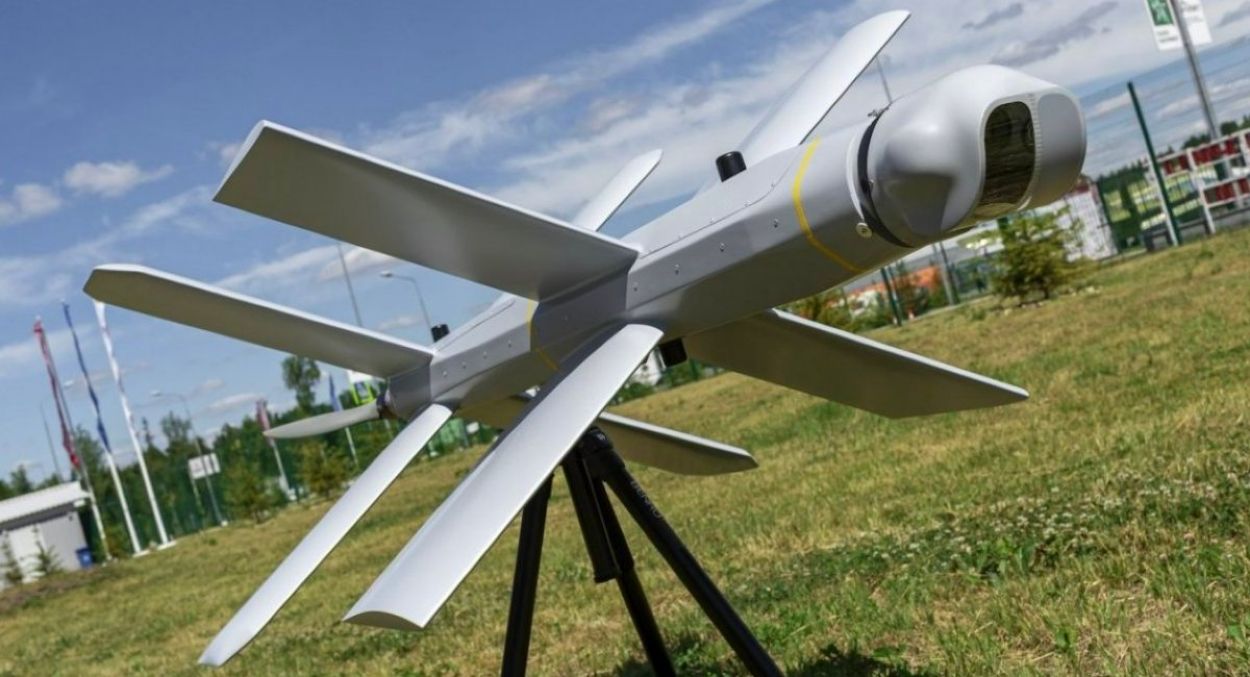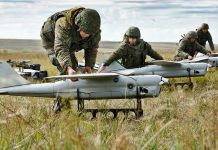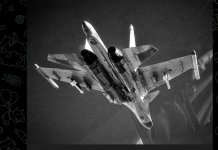There has been a noticeable consistency in Russia’s use of its artillery over the last two months in Ukraine, indicating it has reintroduced those weapons as their advantages become more suited for the battlefield scenario.
Publicity material from the Russian Ministry of Defense (RuMoD) since May featured actions of the big guns more frequently, while the Lancet-3 kamikaze drones figure more infrequently.
An inference that can be drawn is that Moscow switched tactics since the heavy weaponry had more utility in stopping Ukraine’s largely unsuccessful counteroffensive.
Russia had switched to using Lancet-3 kamikaze drones following the tactical withdrawal from Kherson in November last year after Ukraine had begun targetting its long and vulnerable supply lines that fed its gun and tube rocket artillery. The reappearance of the conventional heavy weapons in RuMoD press releases aligned with the run-up and execution of Ukraine’s counteroffensive.
Russia Adapts On The Move
This means Russia had strengthened its defenses and secured its supply lines to be able to bring back its artillery. Utilizing the advantages of both systems, the change in tactics – or rather, the reversion to an earlier practice – aligns with several previous observations about Russian military doctrine.
Its fashion of warfighting has been assessed to be highly adaptable, rapidly incorporating and evolving new tactics upon learning from mistakes. This happens during slow, incremental, and long campaigns instead of aiming for quick rapid victories. Western analysts, diplomats, and Ukraine’s leaders have noted this approach.
In previous analyses, the EurAsian Times had touched upon this preference for ‘long wars’ and unorthodox usage of artillery systems. As also discussed in another report, Lancets were used to great effect for striking Ukraine’s Western-made lightly armored artillery, 45 percent of which were destroyed by the UAVs alone since the beginning of the war in February 2022.
But the lighter drones cannot undertake destroying mass movements of tanks, infantry fighting vehicles (IFV) columns, troop concentrations, and fortified command centers. The aircraft sometimes cannot fully destroy tanks and armored vehicles, particularly if not hit at the right angles.
What Does Russian MoD Say
The Akatsiya 23SM Self-Propelled Gun (SPG); the 2S19 Msta-S SPG; the 2S7 Pion/2S7M Malka SPG, the world’s largest such SPG; the 2S5 Giatsint SPG; the world’s largest mortar, the 2S4 Tyulpan that fires laser-guided mortar rounds and the Tornado Multiple Rocket Launch System (MLRS) has emerged as the leading Russian artillery systems.
The mainstay of the Russian artillery inventory, they are also featured prominently in battlefield videos released by the Russian Ministry of Defense (RuMoD).
They are used to destroy Ukraine’s Soviet-era 122mm D-30 howitzer, D-20 howitzer, Gvozdika SPG, 152mm 2A65 Msta-B howitzer, US-made M777 lightweight howitzer, command posts, and troop concentrations. Lancets are meanwhile used to hit Ukraine’s Western-made counter-battery/gun-locating radars and lightly armored SPGs like the Polish KRAB.
Some of the most recent actions since late June illustrate the use of heavy artillery.
- On June 29, near Cherovnaya Dibrova in Donetsk, two D-30, one D-20, and one Gvozdika SPG were hit using artillery.
- On June 30, a RuMoD video showed an Akatsiya 23SM used by the Dnepr Group of Forces in south Ukraine firing. It claimed to have destroyed an M777.
- On July 3, a Tornado-S Multiple Launch Rocket System (MLRS) under the Yug Group of Forces in south Ukraine destroyed command posts of the Ukrainian army’s 53 Mechanised Brigade near Predtechino.
- The same day during counter-battery warfare using one of the above gun artillery systems, the Russian army destroyed an Infantry Fighting Vehicle (IFV) near Artyomovsk, a Gvozdika SPG near Konstantinovka, a D-30 near Maskimiliyanovka and a Msta-B near Ostroye.
- On July 4 near Kupyansk, a Tornado MLRS launched guided missiles at a military train close to Bakaleya and destroyed a Ukrainian Uragan MLRS.
Artillery continued to be used similarly until June 5 on Ukrainian ground targets like mechanized units, mortar crews, reconnaissance-in-force formations, rotation attempts, and “temporary deployment points” in South Donetsk, Zaporizhzhia, Lugansk, Kupyansk, Soledar-Artyomovsk, Konstantinovka,
Tactics
Evolving Russian tactics can be seen from how the ground forces have slightly modified their counter-battery warfare.
Counter-battery warfare involves destroying enemy artillery systems with one’s own guns by retracing the incoming shells to their points of origin with complex mathematical calculations or gun-locating radars. Interestingly, Russian officials had announced how counter-battery fires were conducted using Lancets. The drones helped beyond unburdening the larger artillery’s long, logistical supply lines.

Using them for counter-battery roles also meant the shells that the logistic lines supplied would be consumed less, making more of them available for other targets. “This is because the time for putting Ukrainian artillery out of action after it has been detected is reduced to the maximum, a large consumption of conventional ammunition is not required, and the operating time of reconnaissance assets and combat crews is reduced,” an unnamed official in the RIA Novosti.
But it now mentioned that big guns were also used for counter-battery warfare. On June 28, on its Telegram channel, the RuMoD posted a promotional poster of the Malka – an upgraded version of the Pion – advertising its new features. These include an increased rate of fire, faster maneuverability aided by a new engine, a redesigned chassis, and a new fire control system that has enhanced its counter-battery warfare.
This does not mean it has again fully substituted Lancet-3s with regular artillery, but that it is combining both of them. Using them parallelly, they are now broadly assigned their core tasks while periodically employing them for secondary roles.
Suicide drones restrict freedom of movement for enemy troops, acting as a major irritant in their tactical momentum. But entire armor convoys like the abandoned or destroyed Leopard 2 tanks and Bradley IFVs in pictures representing Ukraine’s failed counteroffensive could not have been achieved with Lancets.
The Kamov Ka-52 Alligator attack helicopter also claimed the lion’s share of these kills, firing its Vikhr anti-tank guided missiles (ATGM) to destroy Ukrainian armor from distances of more than seven kilometers.
Kamov and artillery attacks were either when the Ukrainian army accumulated for a counteroffensive, conducting ‘probing attacks’ to identify gaps in Russian defenses, or simply trying to ‘breakthrough’ through Russian lines. Only shells with a big explosive force can stop large formations in their tracks.
For instance, on June 27, Oleg Chekhov, spokesperson for the Vostok Group of Forces, reported “repelling” an attack “supported by artillery” at Malaya Tokmachka near Zaporizhzhia, destroying an Infantry Fighting Vehicle (IFV), an Armored Fighting Vehicle (AFV) and Ukrainian “manpower.” It suggests artillery and Kamov Ka-52 Alligator helicopters must have worked in tandem to halt the attack.
The same day (June 27), spokesperson for the Yug Group of Forces Vadim Astafyev, operating in south Ukraine, said a Pion SPG hit “enemy manpower and hardware concentration areas” close to Vasyukovka, Mirolyubovka, and Razdolovka. The group’s artillery also destroyed a fuel and lubricants depot and a temporary deployment point of the Ukrainian army’s 119th Territorial Defense Brigade near Kirovo and Rozovka.
June 27, however, saw a remarkable action. Russia’s Sirius (or Inohodets), a Medium/High-Altitude Long-Endurance (MALE/HALE)-class combat drone – featured in this previous EurAsian Times piece – was used to destroy a Ukrainian ammunition depot. It cued a laser-guided Krasnopol high explosive artillery round, with a thermal image from the UAV’s electro-optical system showing the explosion on the ground.
Lancet kamikaze drones, meanwhile, appear to be used for destroying enemy radars and light targets like the 2C9 Nona artillery gun and the US M777 howitzer. Reports about their usage in RuMoD press briefings are sporadic. Following are their last four attacks:
- On July 4, a “special unit” under the Zapad Group used a Lancet-3 to destroy a P-18 long-range enemy radar near Dergachi.
- On July 1, a Lancet was used to destroy an American-made AN/TPQ-50 counter-battery radar near Vasiltsovka and Peschanoye.
- On June 25, it destroyed an unidentified SPG near Kamenskoye.
- On June 21, a Lancet destroyed two Ukrainian pickup trucks carrying enemy infantry.
Only on June 26 did Lancet figure prominently after some gap, when it destroyed a German-made PzH 2000 SPG near Druzhkovka.
Videos and tweets by popular handles like OSINTdefender, KanekoaTheGreat, and Lord Bebo, too, showed drone footage of Ukrainian armor being hit and credited to the supremacy of Russian artillery.
Russian Artillery Doctrine
The resumption of heavy artillery on the battlefield brings into focus Russia’s unorthodox doctrine in using such weapons, analyzed in a previous article. Two distinct practices have been noted. First, unlike the American approach, it does not use artillery to support troops by ‘softening’ targets, where ground infantry mop up what’s left.
Rather the other way around, maneuvering Battalion Tactical Groups (BTG) work in support of artillery, fixing the enemy into kill zones before calling in strikes to deliver the final blow.
Another is a ‘maneuver-by-fire,’ according to an article on Armada International, where artillery units don’t ‘shoot-and-scoot’ until coming under fire.
“Artillery units typically remain in their firing position, shifting rapidly from one target to another. This makes artillery responsive against targets as and when they appear. Meanwhile, fires can be concentrated against one or more specific targets or fragmented across multiple aim points,” the article said.
The Russian logic against the risk of coming under counter-battery fire is that if “enough fires are directed against hostile artillery from the start, the less effective counter-battery fire will be.”
- The author can be reached at satamp@gmail.com
- Follow EurAsian Times on Google News




